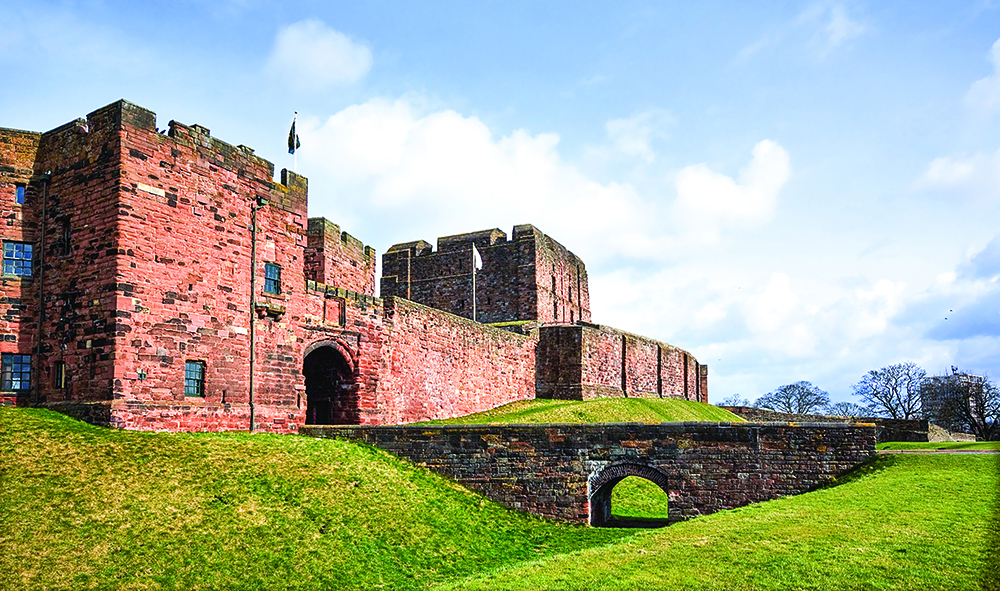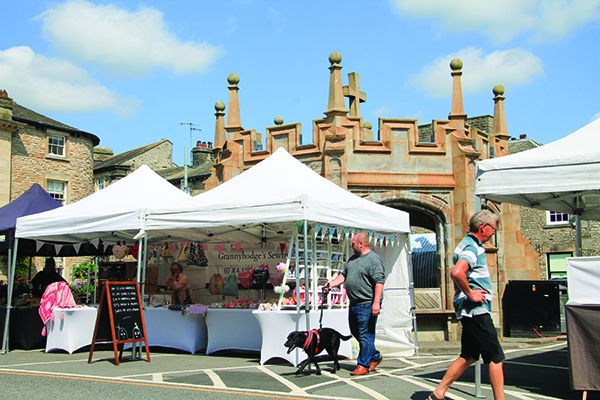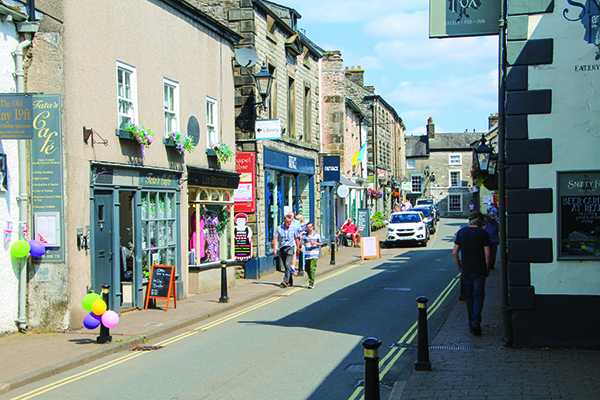
by Brian Spencer
Carlisle’s Crown and Mitre Hotel was our base for our visit to Cumbria with Slacks Travel. Overlooking the town square where Bonnie Prince Charlie mustered his bedraggled troops on his retreat from Derby, it was time for a quick look round this ancient Border city where captured Scottish Reivers (cattle rustlers) were publicly hanged.
Emperor Hadrian’s Wall builders left little in Carlisle to remind us of their stay, the Wall crossed the River Eden below what, since Norman times, became the modern city. In 1092, the conquerors built a substantial castle which, thanks to its being still used as a barracks for local militia, remains unaffected by the passing of time. It was within its walls that Mary Queen of Scots began her long unhappy imprisonment in 1568. Much of Carlisle’s history is displayed in Tullie House Museum, based on the records of the north’s equivalent of diarist Samuel Pepys. The cathedral dating from 1123 is built on Norman work, with windows rivalling those in York Minster. From the range of emperors covered by the extensive coin collections in Tullie House Museum, it looks as though the Romans who occupied northern Britain were very careless with their small change.
The last time I stayed at the Crown and Mitre was on a business trip north. Retiring to the bar for a well-earned G&T, and specifying Gordon’s Gin, I was obviously overheard because one of two other men standing at the bar introduced himself as the local Gordon’s rep and in thanking me for specifying his company’s brand, would I please accept a double on him!

Carlisle’s wonderful street market
Carlisle’s links with all things alcoholic are unusual. During the Great War, as a break from making the town’s famous biscuits, being well away from danger, it became an important base for the production of munitions. While the work of making shells and other explosives was highly lucrative, production barely kept pace with battlefield demand. At that time there was no such thing like today’s licencing laws. The highly paid munition’s workers were accused of drinking and spending too much time in the local pubs. As an experiment, the Government decided to take over the local breweries and pubs, making Carlisle’s the only State-owned businesses in the country, an anomaly that continued until a few decades ago.
On day two we were enjoying a cross country trip over to Ravenglass for a run on ‘l’al ratty’ the narrow gauge railway that runs from the coast, up into the hills above Eskdale, but due to unforeseen circumstances this sadly had to be delayed by a day.
The original plan was to make a quick visit to the tiny dales’ market town of Kirkby Stephen and then drive over the limestone moors across the western edge of the Yorkshire Dales National Park, then to Settle. Here we would join the famous Settle – Carlisle line on its northern journey. This was the plan, but first we had the enjoyment of Kirkby Stephen’s market stalls and quaint shops lining side streets leading into the square. The parish church stands on one of them, overlooking the town. Surprisingly for such a small place, the church has almost cathedral-like proportions, with carvings and memorials to the Musgraves and Whartons, local gentry who for generations lived nearby at Wharton Hall, now mostly converted into a farmhouse.
There is a popular spot just below the town, where an ancient stone-arched bridge crosses the infant River Eden. Legend has it that the devil made the bridge when he dropped a pile of rocks during an attempt to cross the river while it was in flood. Maybe we should have heeded the legend, but the drive across the moors, beneath the awesome bulk of dales’ giants such as Penyghent, Ingleborough and Whernside, the famous Three Peaks of the Dales was awesome. A short stop at Ribblehead gave us a view of the multi-arched Ribblehead Viaduct we were to cross in about an hour, or so we thought.
With Penyghent on our left, and lofty Ingleborough to the right, we ambled steadily along upper Ribblesdale, stopping at Settle Station in good time for the train back to Carlisle. This was the line that Michael Portillo M.P. saved from closure when he was Transport Minister. Standing at the southern end of the line, the station is part-volunteer run, on the Settle to Carlisle Railway. The station shows the volunteer aspect to the full, with carefully nurtured flower beds and fresh paint everywhere, it is a reminder of what can happen when staff have the time and interest to care for their station; it takes you back to what small railway stations once looked like. Finishing the rural atmosphere was the view across to the rolling western fells above the famous Giggleswick School. The happy sound of less privileged children competing in their annual sports day rose from the village rugby field far below the station, a sound that was to entertain us for rather longer than expected.
We wanted a train, but where was it? Standing in bright sunshine on a warm summer’s day with the happy sound of children competing with bug-hunting thrushes and blackbirds, soon began to lose interest. We were kept informed of events by an enthusiastic S.C.R volunteer, who passed on reports as they came from some controller further back along the line. Apparently it was the almost predictable signal failure somewhere south of Hellifield Junction, but the train did eventually make an appearance, only an hour or so late. So off we went, enjoying Yorkshire’s finest dales’ scenery from the luxurious comfort of air conditioned coaches, upholstered with the latest design in seats. The 73 mile journey back to Carlisle went smoothly, stopping at remote stations (Dent is the highest main line station in Britain), and crossing the 440 yards long, 24-arched Ribblehead Viaduct complete with its admirers far below.
A prompt early start on the last day took us round the back of Blencathra and Skiddaw, the Lakes’ northern giants. Cumbia’s coastal industry passed in a flash and we reached Ravenglass with time for a quick coffee before joining the Ravenglass and Eskdale Railway, a seven mile long 15inch gauge line from Ravenglass, winding through pine woods below Muncaster Castle, to Boot in mid Eskdale. Known affectionately as l’al ratty, it follows the route of a standard gauge mineral line originally laid to carry stone and iron ore down to the coast. When that line closed the route was taken over in 1915 by the model maker Wenman Joseph Bassett-Lowke as somewhere to test his minute steam locomotives. Since then it has become one of the major popular attractions to Lakeland. Powered by coal burning boilers, the trains they haul are run by volunteer guards, with a fireman and driver on the cramped footplate in front who have to bob up and down in order to check the safety of the track ahead. The line, incidentally, follows part of the Roman road from the sea at GLANNAVENTA (Ravenglass), then past their bleak outpost on Hardknott Pass to the relative comforts of GALAVA (Ambleside).
A cross country drive through gentle Lakeland drizzle and with Steve in charge, we reached the M6 South in short order, then quickly through the delights of Manchester’s equivalent of Spaghetti Junction, to Matlock and home, a pleasant end to an exciting journey, made easier thanks to Steve, Slack’s efficient driver.
By Brian Spencer



